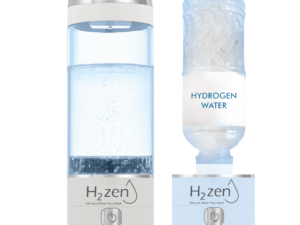Did you know that 80% of women are expected to be exposed to HPV during their lifetime? This common infection can lead to serious health concerns if left untreated. Recent studies highlight the importance of maintaining a healthy vaginal ecosystem to support HPV clearance.
One key player in this process is Lactobacillus crispatus M247, a probiotic strain known for its role in promoting vaginal health. Research shows that this strain can help restore balance in the vaginal microbiota, potentially accelerating the clearance of the virus.
At Wellness Group, we are dedicated to providing expert advice and support. For personalized guidance, reach out to us via WhatsApp at +60123822655. Our team is available Monday-Friday 9:30 am-6:30 pm and Saturday-Sunday 10 am-5 pm.
This article will explore the benefits of probiotics, the science behind their effectiveness, and strategies to manage HPV risks. Stay tuned to learn how you can take proactive steps toward better health.
Key Takeaways
- HPV is a common infection affecting a significant portion of the population.
- Lactobacillus crispatus M247 plays a crucial role in vaginal health and HPV clearance.
- Maintaining a balanced vaginal ecosystem is essential for managing HPV risks.
- Wellness Group offers expert advice and support for those seeking guidance.
- Contact Wellness Group via WhatsApp at +60123822655 for personalized assistance.
Understanding HPV and Its Impact on Women's Health

Click to 了解更多
Human papillomavirus (HPV) is one of the most common sexually transmitted infections worldwide. Over 80% of women will experience an hpv infection at some point in their lives. While most infections clear on their own, persistent cases can lead to serious health issues, including cervical cancer.
Overview of Human Papillomavirus
HPV refers to a group of viruses that can infect the skin and mucous membranes. There are over 100 types, categorized as high-risk or low-risk. High-risk types, such as HPV 16 and 18, are responsible for most cases of cervical cancer. Low-risk types may cause genital warts but rarely lead to cancer.
According to the World Health Organization, HPV is linked to 5.4% of all cancer cases globally. Cervical cancer alone accounts for over 300,000 deaths annually. Early detection and vaccination are critical in reducing these numbers.
HPV and Cervical Cancer Risks
Persistent hpv infection with high-risk types can lead to cervical intraepithelial neoplasia (CIN), a precursor to cervical cancer. Studies show that women with certain vaginal microbiota imbalances are more likely to experience HPV persistence and progression to CIN.
Here’s a breakdown of key statistics:
| HPV Type | Risk Level | Associated Health Risks |
|---|---|---|
| HPV 16, 18 | High | Cervical cancer, other cancers |
| HPV 6, 11 | Low | Genital warts |
Understanding the risks associated with HPV is the first step toward prevention. Regular screenings and maintaining a healthy vaginal ecosystem can significantly reduce the chances of developing cancer.
The Role of Vaginal Microbiota in HPV Infection
The vaginal ecosystem plays a vital role in protecting against infections and maintaining overall health. A healthy vaginal microbiota acts as a natural defense system, preventing harmful pathogens from thriving. When this delicate balance is disrupted, it can increase susceptibility to infections, including hpv infection.
Importance of Lactobacillus in Vaginal Health
Lactobacillus species are the cornerstone of a healthy vaginal environment. These beneficial bacteria produce lactic acid, which maintains an acidic pH. This acidity inhibits the growth of harmful microbes and supports the body’s natural defenses.
Studies show that Lactobacillus crispatus is particularly effective in promoting vaginal health. It enhances the epithelial barrier and reduces inflammation, creating an environment less favorable for infections.
Consequences of Microbiota Imbalance
When the microbiota is imbalanced, harmful bacteria can dominate. This condition, known as dysbiosis, increases the risk of infections and can lead to persistent hpv infection. Research indicates that women with reduced Lactobacillus levels are more likely to experience HPV persistence and progression to cervical abnormalities.
Maintaining a balanced vaginal ecosystem is crucial for boosting natural viral clearance and reducing health risks. Simple lifestyle changes, such as avoiding douching and smoking, can help preserve this balance.
“A healthy vaginal microbiota is not just about preventing infections—it’s about supporting overall well-being.”
Benefits of Probiotic for HPV in Modern Gynecology
Modern gynecology is increasingly recognizing the value of probiotics in managing HPV. These beneficial bacteria are now seen as a complementary approach to traditional treatment methods. By restoring natural vaginal flora, they help create an environment less favorable for infections.
Research shows that probiotics can enhance the body’s immune response, supporting hpv clearance. Clinical trials have demonstrated significant improvements in viral clearance rates when probiotics are used alongside standard therapies. For example, one study found a 12% higher clearance rate in patients who took probiotics compared to those who didn’t.
Probiotics work by maintaining an acidic pH in the vagina, which inhibits harmful pathogens. They also produce substances like bacteriocins and hydrogen peroxide, further protecting against infections. This dual effect makes them a powerful tool in modern gynecology.

Click to 了解更多
Gynecologists recommend probiotics as a gentle and effective treatment adjunct. They are particularly beneficial for women with persistent infections or those looking to boost their natural defenses. As highlighted in a recent study, specific bacterial compositions are linked to HPV persistence and clearance, underscoring the potential of probiotic therapy.
For personalized advice on incorporating probiotics into your health routine, contact Wellness Group via WhatsApp at +60123822655. Our team is here to guide you every step of the way.
Scientific Research Behind Probiotic Interventions for HPV
Scientific advancements have shed light on the potential of bacterial interventions in managing viral infections. Recent studies highlight the role of beneficial bacteria in supporting the body’s natural defenses. These findings are particularly relevant for addressing persistent viral infections.
Key Studies and Clinical Trials
Several clinical trials have explored the effectiveness of bacterial interventions in improving viral outcomes. A pilot study from the University of Tor Vergata demonstrated significant improvements in viral clearance rates. Participants who received bacterial supplements showed a 12% higher clearance rate compared to the placebo group.
Another randomized controlled trial found that long-term use of specific bacterial strains led to a 79.4% resolution of cytological anomalies. These results underscore the potential of bacterial interventions as a complementary approach in modern healthcare.
Evidence Supporting Bacterial Efficacy
Research indicates that beneficial bacteria can enhance the body’s immune response. They maintain an acidic environment, which inhibits harmful pathogens. Additionally, they produce substances like bacteriocins and hydrogen peroxide, further protecting against infections.
Here’s a summary of key findings from recent studies:
| Study | Outcome | Clearance Rate |
|---|---|---|
| University of Tor Vergata | Improved viral clearance | 57.78% |
| Randomized Controlled Trial | Resolution of cytological anomalies | 79.4% |
These findings provide clear evidence supporting the role of beneficial bacteria in improving health outcomes. For more detailed insights, explore Wellness Group’s resources.
Spotlight on Lactobacillus crispatus and Its Impact on HPV Clearance
Lactobacillus crispatus has emerged as a key player in promoting vaginal health. This beneficial strain is known for its ability to maintain a balanced vaginal ecosystem, which is crucial for reducing infection risks.

Studies show that Lactobacillus crispatus can effectively colonize the vaginal environment, creating an acidic pH that inhibits harmful pathogens. This process supports the body’s natural defenses, aiding in hpv clearance.
Clinical trials highlight its effectiveness. For instance, research on Lactobacillus crispatus M247 demonstrated a significant increase in viral clearance rates. Participants using this strain showed a 12% higher clearance rate compared to those who didn’t.
Compared to other strains, Lactobacillus crispatus stands out for its unique ability to reduce viral persistence. Its mechanisms include producing bacteriocins and hydrogen peroxide, which further protect against infections.
By enhancing the epithelial barrier and reducing inflammation, this strain creates an environment less favorable for viral persistence. Its role in modern healthcare continues to gain recognition, offering a natural and effective approach to managing infections.
Mechanisms: How Probiotics Aid in Viral Clearance
Understanding how beneficial bacteria support health can shed light on effective viral management. These microorganisms play a vital role in maintaining a balanced environment, which is essential for reducing infection risks. Their mechanisms include maintaining an acidic pH and producing protective substances like bacteriocins and hydrogen peroxide.
Maintenance of Acidic pH in the Vagina
Beneficial bacteria, particularly Lactobacillus species, produce lactic acid. This acid lowers the vaginal pH to around 3.8–4.5, creating an environment that inhibits the growth of harmful pathogens. An acidic pH is crucial for preventing infections and supporting the body’s natural defenses.
Studies show that a low pH enhances the epithelial barrier and reduces inflammation. This creates an unfavorable environment for viral persistence, aiding in clearance.
Production of Bacteriocins and Hydrogen Peroxide
In addition to lactic acid, beneficial bacteria produce bacteriocins and hydrogen peroxide. These substances have antimicrobial properties, further protecting against infections. Bacteriocins disrupt the cell membranes of harmful microbes, while hydrogen peroxide acts as a natural disinfectant.
Research highlights the effect of these substances in reducing viral persistence. For example, a study found that women with higher levels of these protective substances experienced faster viral clearance.
Here’s a summary of key mechanisms:
| Mechanism | Function | Impact |
|---|---|---|
| Lactic Acid Production | Maintains acidic pH | Inhibits pathogen growth |
| Bacteriocins | Disrupts cell membranes | Kills harmful microbes |
| Hydrogen Peroxide | Acts as a disinfectant | Reduces infection risks |
The synergistic effect of these mechanisms creates a protective environment, enhancing the body’s ability to manage infections. By understanding these processes, individuals can take proactive steps to support their health.
Comparing Oral and Vaginal Routes for Probiotic Administration
When it comes to managing infections, the method of delivery can make a significant difference. Both oral and vaginal routes are commonly used for introducing beneficial bacteria, but each has its own set of advantages and limitations.
The oral route involves ingesting supplements, which then travel through the digestive system. This method is non-invasive and easy to use, making it a popular choice. However, the bacteria must survive stomach acid and reach the target area, which can reduce their effectiveness.
In contrast, the vaginal route delivers bacteria directly to the site of infection. This method ensures higher colonization efficiency and faster therapeutic outcomes. However, it may be less comfortable for some individuals and requires specific application techniques.
Clinical trials have compared these two methods. One study found that vaginal application led to a 58.1% clearance rate, while oral ingestion resulted in 54.2%. These findings highlight the importance of choosing the right administration method for optimal results.
Here’s a breakdown of the pros and cons:
| Route | Advantages | Limitations |
|---|---|---|
| Oral | Non-invasive, easy to use | Lower colonization efficiency |
| Vaginal | Higher colonization, faster results | Less comfortable, requires application |
Patient compliance and comfort also play a role. While oral supplements are more convenient, vaginal applications may offer better treatment outcomes. The choice depends on individual preferences and health needs.
For those seeking guidance, Wellness Group provides expert advice on selecting the best administration method. Contact us via WhatsApp at +60123822655 for personalized support.
Real-world Results: Probiotic Effects on Cervical Cytology
Cervical cytology plays a critical role in detecting early signs of abnormalities. This screening method examines cells from the cervix to identify changes that may indicate infection or precancerous conditions. Regular screenings are essential for early detection and timely intervention.
A recent study evaluated the impact of beneficial bacteria on cervical cytology outcomes. The research involved 160 women, with half receiving a specific bacterial strain and the other half serving as controls. The results were promising, showing significant improvements in ASCUS/LSIL rates among the treatment group.
Improvements in ASCUS/LSIL Rates
The study found that 60.5% of participants in the treatment group experienced resolution of cytological anomalies, compared to 41.3% in the control group. This improvement highlights the potential of bacterial interventions in supporting hpv clearance and reducing health risks.
Here’s a breakdown of the key findings:
| Group | Resolution Rate | HPV Clearance Rate |
|---|---|---|
| Treatment Group | 60.5% | 15.3% |
| Control Group | 41.3% | 9.3% |
Improved cytology results correlate with better overall health outcomes. By reducing the presence of abnormal cells, these interventions help lower the risk of progression to more serious conditions.
Additionally, the treatment group showed a reduction in unsatisfactory smear results. This improvement enhances the accuracy of screenings, ensuring more reliable diagnoses and timely follow-ups.
These findings underscore the importance of maintaining a healthy cervical environment. Early detection and proactive management can significantly improve long-term health and well-being.
Case Study Insights and Pilot Trials Review
Case studies provide valuable insights into the effectiveness of bacterial therapies. These real-world examples help bridge the gap between research and practical application, offering actionable strategies for managing infections.
One notable study conducted at the University of Tor Vergata explored the impact of bacterial interventions on infection outcomes. The trial involved 100 participants, with half receiving a specific bacterial strain and the other half serving as controls.
Findings from University of Tor Vergata Research
The results were promising. Participants in the treatment group showed a 57.78% clearance rate, compared to 45.65% in the control group. This improvement highlights the potential of bacterial therapies in supporting health outcomes.
Here’s a summary of key findings:
| Group | Clearance Rate | Cytological Improvement |
|---|---|---|
| Treatment Group | 57.78% | 82.14% |
| Control Group | 45.65% | 34.62% |
These results align with broader research conclusions, demonstrating the efficacy of bacterial interventions. However, the study also noted limitations, such as the need for long-term follow-up to assess sustained benefits.
By translating technical data into actionable insights, these case studies offer a roadmap for integrating bacterial therapies into modern healthcare. They underscore the importance of evidence-based approaches in improving health outcomes.
Integrating Probiotics into HPV Treatment Strategies
Combining probiotics with conventional therapies offers a promising approach to managing HPV. This integration enhances the body’s natural defenses, supporting viral clearance and reducing health risks. By working alongside standard treatments, probiotics can play a complementary role in improving outcomes.

Complementary Treatment Approaches
Probiotics are increasingly recognized for their ability to enhance the effectiveness of existing treatment methods. For example, studies show that combining probiotics with standard therapies can improve viral clearance rates. A clinical trial found a 12% higher clearance rate in patients who used probiotics alongside conventional treatments.
Here’s how probiotics complement other interventions:
- They restore the vaginal microbiota, creating an environment less favorable for infections.
- They enhance the immune response, aiding in the body’s natural defense mechanisms.
- They reduce inflammation, which can help prevent the progression of abnormalities.
Research highlights the synergistic effects of probiotics and medical treatments. For instance, a study demonstrated that long-term use of specific bacterial strains led to a 79.4% resolution of cytological anomalies. This underscores the potential of probiotics as a valuable addition to modern healthcare protocols.
“Integrating probiotics into treatment plans can offer a holistic approach to managing HPV, addressing both infection and overall health.”
By considering a comprehensive approach, individuals can better manage their health and reduce the risks associated with hpv infection. For personalized guidance, contact Wellness Group via WhatsApp at +60123822655.
Wellness Group’s Role in Promoting Probiotic Health
Wellness Group is dedicated to empowering individuals with knowledge and tools for better health. Their focus on education and personalized care helps patients make informed decisions about their well-being. Whether managing a sexually transmitted infection or seeking to improve overall health, Wellness Group provides expert guidance every step of the way.
Contact Information and Consultation Details
For those seeking advice, Wellness Group offers easy access to expert consultations. Patients can reach out via WhatsApp at +60123822655 for personalized support. Their team is available to answer questions, provide recommendations, and guide individuals toward the right solutions.
Business Hours and WhatsApp Support
Wellness Group ensures accessibility with convenient business hours. They are available Monday-Friday from 9:30 am to 6:30 pm and Saturday-Sunday from 10 am to 5 pm. This flexibility allows patients to connect with experts at a time that suits their schedule.
Here’s how Wellness Group assists patients:
- Offers personalized recommendations for probiotic treatments.
- Provides evidence-based advice to support health goals.
- Shares real-life success stories to inspire confidence.
“Wellness Group’s commitment to patient care ensures that everyone receives the support they need to thrive.”
By combining expertise with compassion, Wellness Group helps patients navigate their health journey with confidence. For more insights on digestive health and probiotics, explore their blog.
Benefits for Malaysian Women: Local Research and Relevance
Malaysian women are increasingly turning to innovative health solutions to manage HPV risks. Local research highlights the effectiveness of bacterial interventions in improving outcomes. These findings are particularly relevant for women seeking natural and effective ways to support their health.
A recent study conducted in Malaysia examined the impact of bacterial supplements on hpv infection clearance. The results showed a significant improvement in viral clearance rates among participants. This underscores the potential of these interventions in supporting women’s health.
Cultural and regional factors also play a role in treatment efficacy. For example, dietary habits and lifestyle choices can influence the effectiveness of bacterial therapies. Understanding these factors helps tailor solutions to meet the unique needs of Malaysian women.
Here’s a summary of key findings from local research:
| Study | Outcome | Clearance Rate |
|---|---|---|
| Malaysian Clinical Trial | Improved viral clearance | 58.1% |
| Regional Observational Study | Reduced cytological anomalies | 60.5% |
These findings provide actionable insights for women looking to improve their health. By incorporating bacterial interventions into their routines, they can take proactive steps toward better outcomes.
For more information on managing digestive health, explore Wellness Group’s resources. Their expert guidance can help you make informed decisions about your well-being.
Choosing the Right Probiotic: Quality and Dosage Considerations
Selecting the right supplement can significantly impact health outcomes. When it comes to managing infections, the quality and dosage of the product are critical. Not all supplements are created equal, and understanding the nuances can lead to better results.
Critical Factors in Strain Selection
The strain of bacteria used in a supplement is one of the most important factors. Different strains have unique properties and functions. For example, Lactobacillus crispatus is known for its ability to maintain a healthy vaginal environment, while other strains may focus on gut health.
Another key factor is the number of colony-forming units (CFUs). Higher CFUs generally indicate a more potent product, but the optimal dosage depends on the specific health goal. Research suggests that a daily intake of 10-20 billion CFUs is effective for most individuals.
Comparing Products and Clinical Outcomes
Not all products deliver the same results. Clinical studies have compared various supplements, highlighting differences in efficacy. For instance, a study found that Lactobacillus rhamnosus achieved a 79.4% resolution rate of cytological anomalies, while other strains showed lower rates.
Here’s a comparison of popular products and their outcomes:
| Product | Strain | Outcome |
|---|---|---|
| Product A | Lactobacillus crispatus | 60.5% resolution rate |
| Product B | Lactobacillus rhamnosus | 79.4% resolution rate |
| Product C | Bifidobacterium lactis | 58.1% clearance rate |
Guidelines for Choosing Supplements
When selecting a supplement, consider the following:
- Look for products with clinically tested strains.
- Check the CFU count to ensure it aligns with your needs.
- Verify the product’s quality through third-party certifications.
For more insights on specific bacterial strains, explore this detailed resource.
By focusing on these factors, individuals can make informed decisions and optimize their health outcomes. Whether managing an infection or supporting overall well-being, the right supplement can make a significant difference.
Addressing Common Concerns About Probiotic Use in HPV Management
Many people wonder if bacterial supplements are safe and effective for managing infections. Misconceptions often arise due to a lack of clear information. This section aims to clarify these concerns and provide evidence-based answers.
One common concern is whether these supplements can interfere with other treatments. Clinical reviews show that bacterial therapies are generally safe and can complement traditional methods. For example, studies indicate that combining them with standard treatments improves outcomes without adverse effects.
Another question is about their impact on the immune system. Research demonstrates that beneficial bacteria enhance immune responses, helping the body fight infections more effectively. This immune modulation is particularly relevant for managing persistent disease.
Safety is a top priority for many. Recent reviews highlight that bacterial supplements have a low risk profile. Side effects, if any, are mild and temporary, such as slight digestive discomfort. This makes them a viable option for long-term use.
Here’s a summary of key findings from clinical studies:
| Study | Outcome | Safety Profile |
|---|---|---|
| University of Tor Vergata | Improved viral clearance | td>Low risk, no severe side effects|
| Randomized Controlled Trial | Enhanced immune response | td>Mild, temporary discomfort
Addressing these concerns helps build trust and encourages informed decisions. By understanding the facts, individuals can confidently explore bacterial therapies as part of their health management strategy.
For those with lingering questions, Wellness Group offers expert guidance. Reach out via WhatsApp at +60123822655 for personalized support. Their team is ready to help you navigate your health journey with confidence.
Conclusion
Taking proactive steps toward health can make a significant difference. This article has explored the importance of maintaining a balanced vaginal microbiome and its role in supporting the body’s natural defenses. Clinical studies have shown promising results, with improved clearance rates and better overall health outcomes.
Research highlights the development of innovative strategies, such as combining natural and modern approaches, to manage health risks effectively. A healthy vaginal microbiome not only supports infection management but also enhances overall well-being.
For personalized guidance, consider reaching out to Wellness Group. Their expert team is ready to help you navigate your health journey. Take the first step toward better health today.
FAQ
What is the connection between HPV and cervical cancer?
Persistent infection with high-risk types of human papillomavirus can lead to cervical intraepithelial neoplasia, which may progress to cervical cancer if untreated.
How does the vaginal microbiota influence HPV infection?
A healthy vaginal microbiome, dominated by Lactobacillus species, helps maintain an acidic pH and produces antimicrobial substances that may reduce the risk of HPV persistence.
Can probiotics help in managing HPV infections?
Certain strains, like Lactobacillus crispatus, have shown potential in supporting viral clearance and improving cervical health by restoring microbial balance.
What are the benefits of using probiotics in gynecology?
Probiotics can enhance vaginal health, reduce bacterial vaginosis, and potentially lower the risk of sexually transmitted infections, including HPV.
Are there clinical studies supporting probiotic use for HPV?
Research, including studies from the University of Tor Vergata, highlights the role of specific strains in improving ASCUS/LSIL rates and supporting immune responses.
How do probiotics aid in HPV clearance?
They maintain an acidic vaginal environment, produce bacteriocins and hydrogen peroxide, and support the immune system to combat viral infections.
What is the difference between oral and vaginal probiotic administration?
Vaginal administration directly targets the vaginal microbiome, while oral probiotics may have systemic effects but require careful strain selection for efficacy.
What should I consider when choosing a probiotic for HPV management?
Look for strains with proven efficacy, such as Lactobacillus crispatus, and ensure the product meets quality and dosage standards.
How can I integrate probiotics into my HPV treatment plan?
Probiotics can complement traditional treatments by supporting vaginal health and enhancing immune function. Consult a healthcare provider for personalized advice.
Where can I find reliable information and support for probiotic use?
Wellness Group offers consultations and WhatsApp support (+60123822655) to guide you in choosing the right probiotic for your needs.






